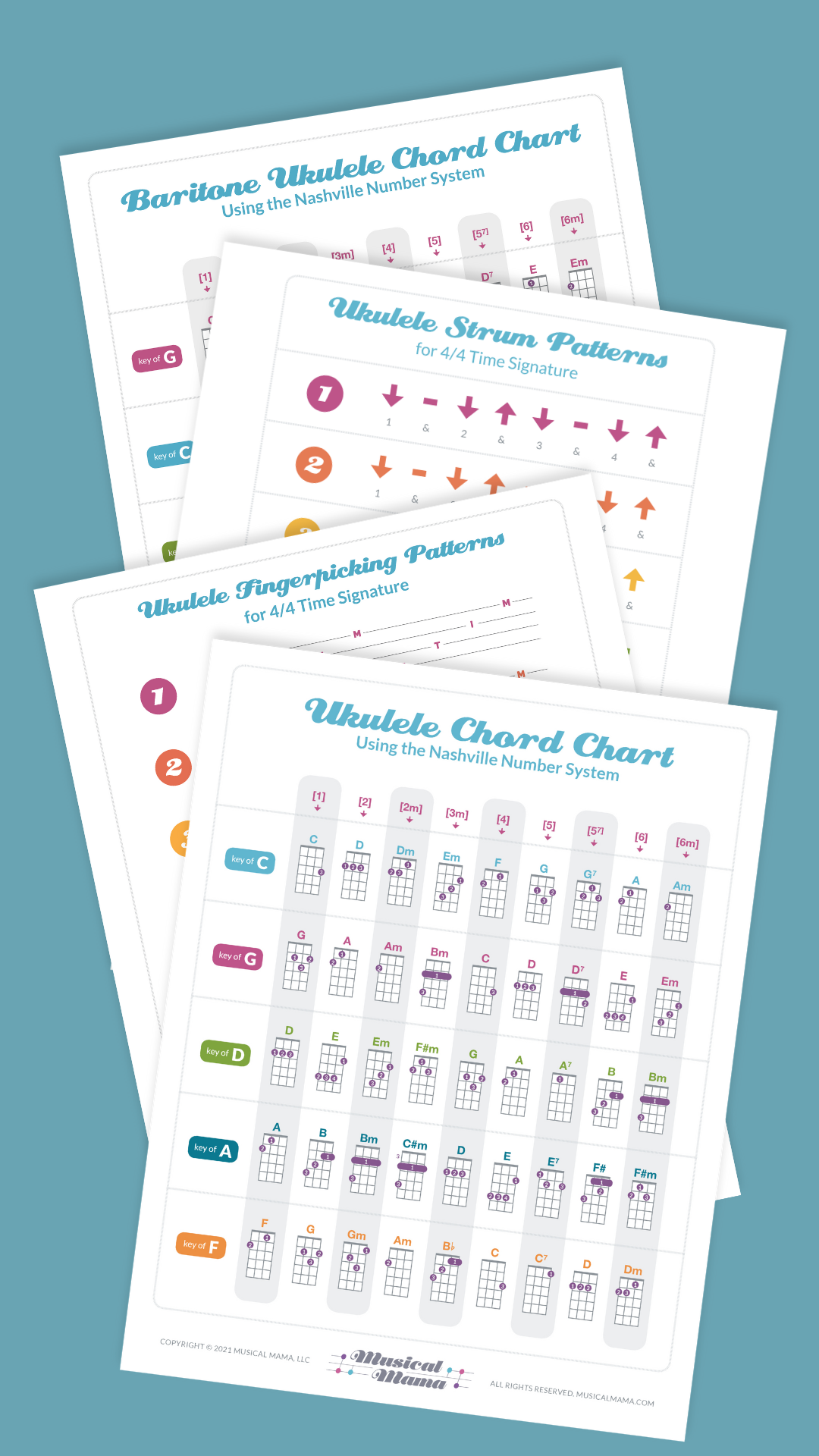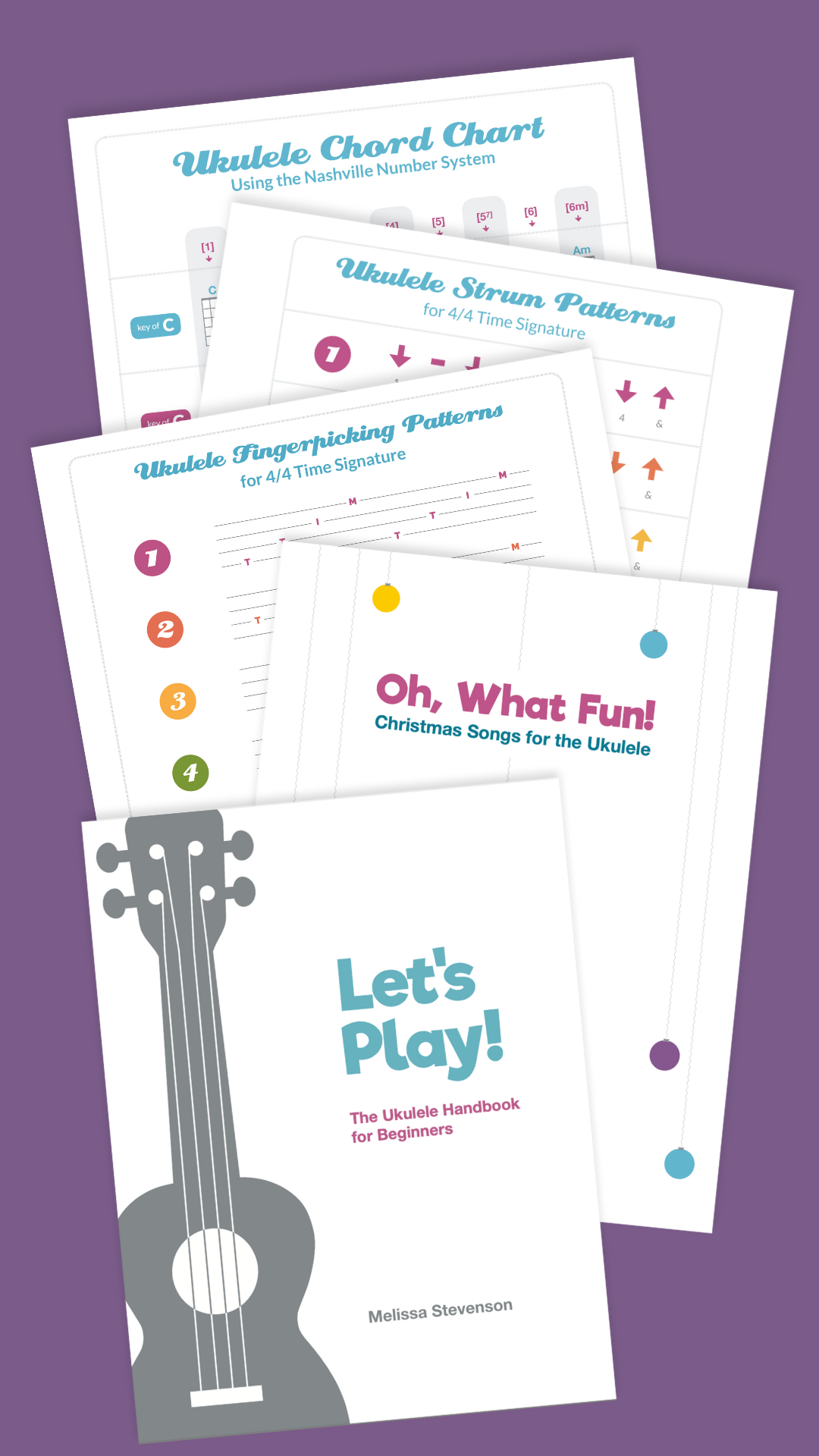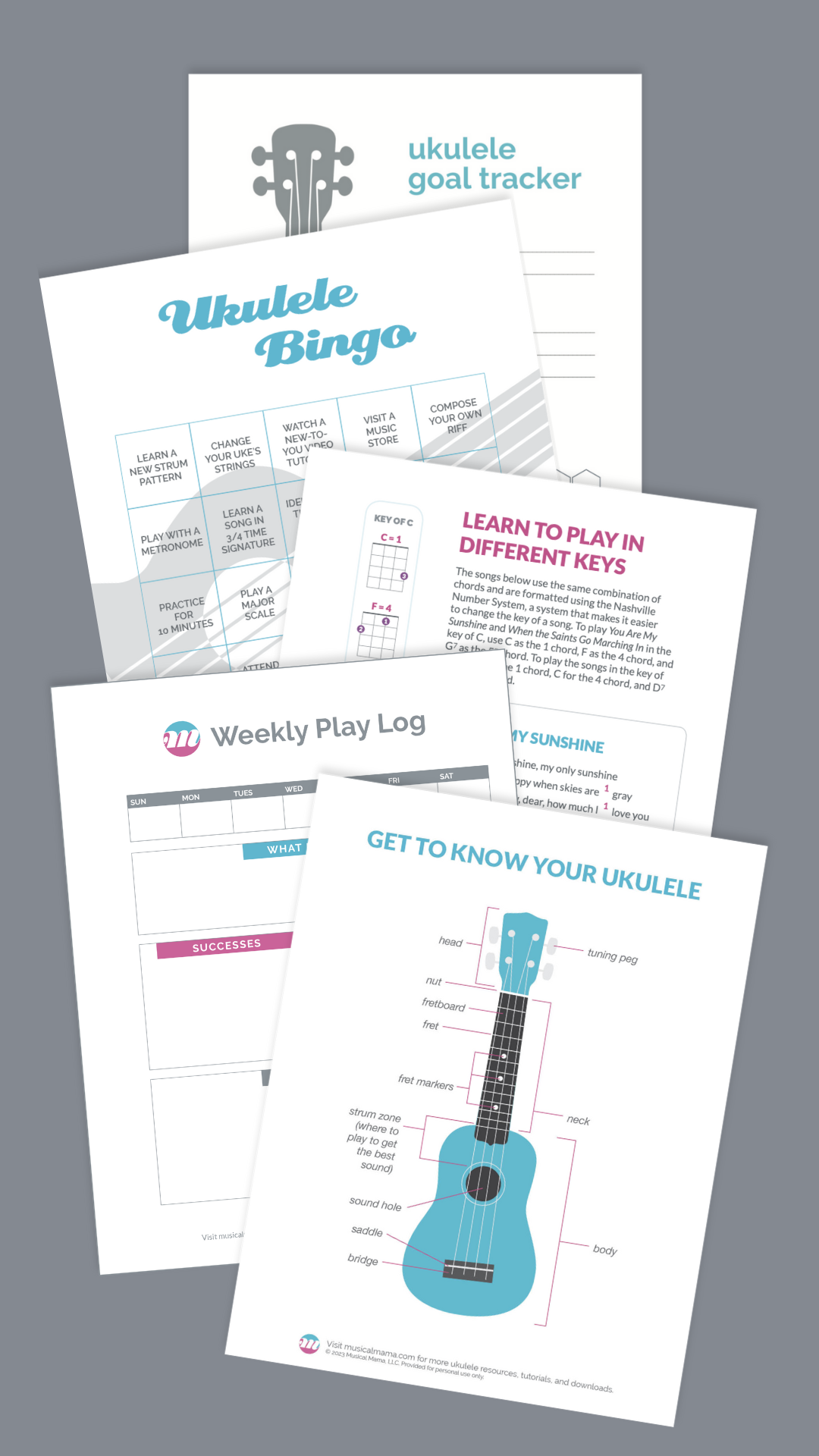I love hearing the brilliant ways my students are finding time to play the ukulele, and I thought I'd share a few of those ideas here on the blog. After all, what's working for them might work for you, too! Here are a few ideas for incorporating your new hobby into life at home:
Do you have a child who's a picky eater? Mama H plays her ukulele to entertain her toddler at mealtimes. Isn't that clever?
What about after dinner? Mama C has a nightly jam with her sons. How fun is that? I love that it's become a ritual in their home!
Mama S plays with her daughters in the morning before heading to work. What a fun way to start the day!
Mama E takes her son to preschool in the afternoon and sometimes ends up having some time to kill before pickup time. I suggested she bring her ukulele and Musical Mama binder in the car so she can jam on the go!
Another mom has a toddler who really wants to play her mama's ukulele. In instances like these, I recommend having a few kid instruments on hand. Or even a second (cheap) ukulele so your child can feel more involved in the music making.
When my children were 1 and 3, my most successful time for playing was right after breakfast. Now that they're 4 and 6, I can usually fit in some time in that narrow window between picking up the kindergartener from school and dinnertime. And if I'm honest, my current favorite time to play is probably after bedtime— my kids sleep soundly enough that my playing doesn't wake them and after a long day, it's a nice way to remind myself that I have an identity that extends beyond "mom." :)
You may find you have to adapt your music habit to your children's evolving rhythms as they grow but as with most other aspects of parenting, a little flexibility and creativity can go a long way.
How are you finding time to make music at home? I'd love to hear about it!














